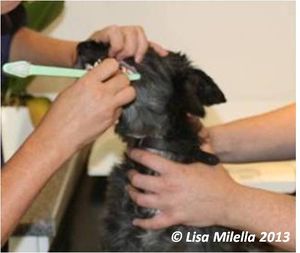Difference between revisions of "Oral Hygiene - Small Animal"
| Line 21: | Line 21: | ||
| + | {{Lisa Milella written | ||
| + | |date = 16 October 2014}} | ||
| + | |||
| + | {{Waltham}} | ||
[[Category:Oral Hygiene]] | [[Category:Oral Hygiene]] | ||
[[Category:Small Animal Dentistry]] | [[Category:Small Animal Dentistry]] | ||
| − | [[Category:Waltham | + | [[Category:Waltham reviewed]] |
Revision as of 10:59, 30 October 2014
| |||||||||||
| |||||||||||
| This article was written by Lisa Milella BVSc DipEVDC MRCVS. Date reviewed: 16 October 2014 |
| Endorsed by WALTHAM®, a leading authority in companion animal nutrition and wellbeing for over 50 years and the science institute for Mars Petcare. |

